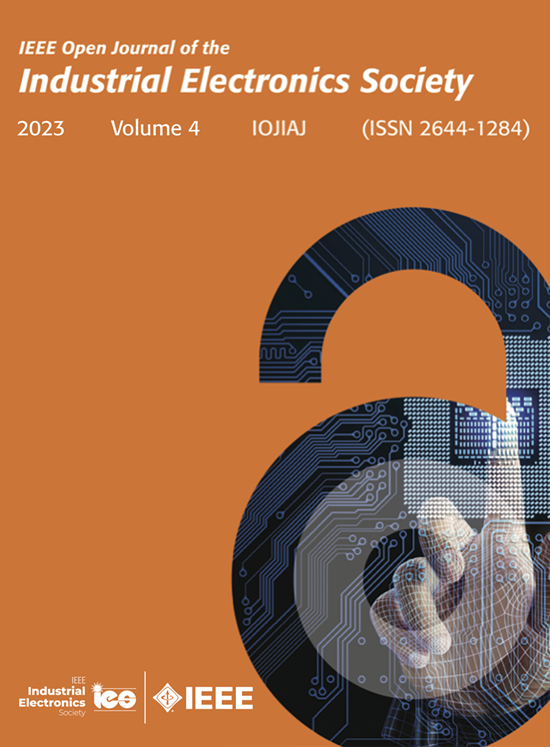Increasing Annual Energy Yield of PV Parks With Inverter Focused Control of On-Load Tap Changers to Enhance AC Power Output and DC Voltage Range
IF 4.3
Q1 ENGINEERING, ELECTRICAL & ELECTRONIC
IEEE Open Journal of the Industrial Electronics Society
Pub Date : 2025-08-04
DOI:10.1109/OJIES.2025.3595491
引用次数: 0
Abstract
Large photovoltaic (PV) parks usually span several voltage levels, separated by stationary transformers. In such parks, inverters face restrictions and losses that originate from varying voltage levels on the ac and dc side. In this article, the option to equip park transformers with on-load tap changers (OLTCs) and control them with the aim of regulating voltage levels on the ac output side of the inverters to increase their effectiveness across several operation points and to lift restrictions in inverter power feed-in is explored. Based on a model of a 105 MVA-park, the operation principle is explained and possible annual increases in energy yield are explored based on a simulation of a specific park setup. Subsequently, requirements for reactive power provision on the park are introduced and varied to study the effects on the results. Next, it is investigated whether the OLTC operation enables a different design choice for a larger inverter capacity for new PV parks to achieve a similar output with fewer units. A concluding economic analysis gives insight into whether the expenses for additional tap-changers can be economically justified for a PV park operator for this setup. Finally, we discuss the implications and potential for implementation of OLTC-based control strategies in utility-scale PV systems.用逆变器集中控制有载分接开关提高光伏电站年发电量,提高交流输出功率和直流电压范围
大型光伏(PV)公园通常跨越几个电压等级,由固定变压器分开。在这样的园区,逆变器面临的限制和损耗源于不同的电压水平在交流和直流侧。在本文中,选择配备有载分接开关(oltc)的变压器,并控制它们,以调节逆变器交流输出端的电压水平,以提高其在多个工作点上的有效性,并解除逆变器馈电的限制。本文以105mva的园区模型为基础,阐述了该系统的运行原理,并通过具体园区设置的模拟,探讨了该系统的年发电量可能增加的情况。随后,介绍了对园区无功供电的要求,并对其进行了变化,以研究对结果的影响。接下来,研究了OLTC操作是否能够为新光伏园区提供更大逆变器容量的不同设计选择,从而以更少的单元实现相似的输出。最后的经济分析可以深入了解额外的分接开关费用对于光伏电站运营商来说是否经济合理。最后,我们讨论了在公用事业规模的光伏系统中实施基于oltc的控制策略的影响和潜力。
本文章由计算机程序翻译,如有差异,请以英文原文为准。
求助全文
约1分钟内获得全文
求助全文
来源期刊

IEEE Open Journal of the Industrial Electronics Society
ENGINEERING, ELECTRICAL & ELECTRONIC-
CiteScore
10.80
自引率
2.40%
发文量
33
审稿时长
12 weeks
期刊介绍:
The IEEE Open Journal of the Industrial Electronics Society is dedicated to advancing information-intensive, knowledge-based automation, and digitalization, aiming to enhance various industrial and infrastructural ecosystems including energy, mobility, health, and home/building infrastructure. Encompassing a range of techniques leveraging data and information acquisition, analysis, manipulation, and distribution, the journal strives to achieve greater flexibility, efficiency, effectiveness, reliability, and security within digitalized and networked environments.
Our scope provides a platform for discourse and dissemination of the latest developments in numerous research and innovation areas. These include electrical components and systems, smart grids, industrial cyber-physical systems, motion control, robotics and mechatronics, sensors and actuators, factory and building communication and automation, industrial digitalization, flexible and reconfigurable manufacturing, assistant systems, industrial applications of artificial intelligence and data science, as well as the implementation of machine learning, artificial neural networks, and fuzzy logic. Additionally, we explore human factors in digitalized and networked ecosystems. Join us in exploring and shaping the future of industrial electronics and digitalization.
 求助内容:
求助内容: 应助结果提醒方式:
应助结果提醒方式:


